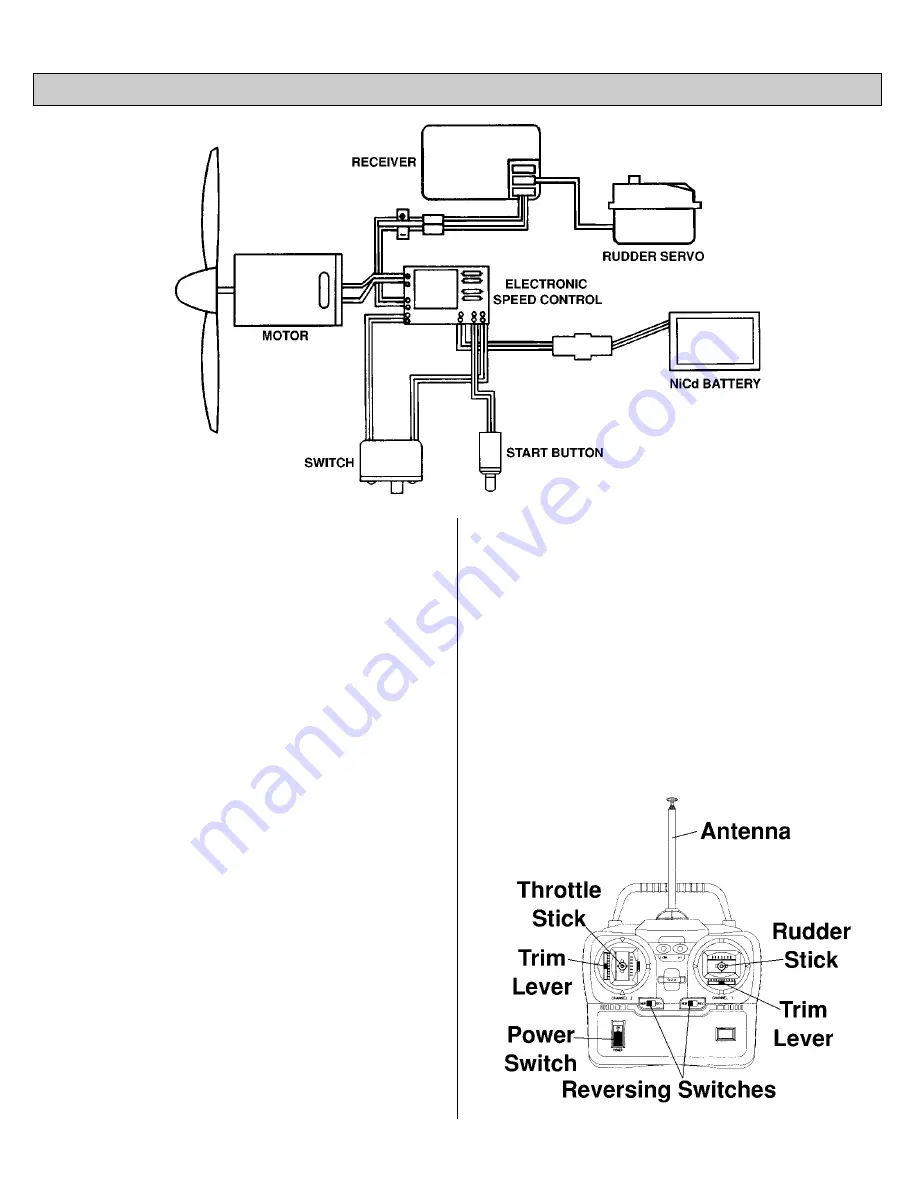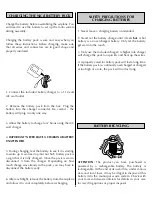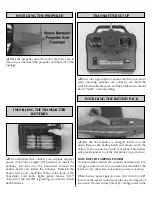
Above is a sketch detailing the layout and function of
the R/C system. It is important to understand the
principles of the system in order to operate your model
correctly.
Charger:
The device used to recharge batteries or
battery packs.
Control Horn:
The arm which is mounted to a control
surface and attached to a pushrod.
Electronic Speed Control with Auto Cut-off:
This unit
controls the speed of the motor. Also it monitors the
battery voltage and turns off the motor so that there will
be enough battery power to operate the radio while you
glide and land the airplane.
Motor:
The motor rotates the prop to provide thrust.
NiCd Battery:
Rechargeable batteries which are used as
power for the airplane.
Receiver (RX):
The radio unit in the airplane which
receives the transmitter signal and relays the control to
the servos.
Servos:
The electronic/mechanical device which moves
the control surfaces of the airplane according to the
commands of the transmitter/receiver.
Switch:
Turns on the power to the receiver, servos
and motor.
Start Button:
With the switch on, pressing the start
button arms the motor. To turn the motor on, move the
throttle stick forward (away from you). To turn the motor
off, move the throttle stick back (toward you).
Transmitter (Tx):
This is the hand-held unit that sends
the signal to the receiver. As you move the stick on the
transmitter, the servo in the airplane will react accordingly.
4
THE RADIO CONTROL SYSTEM


























